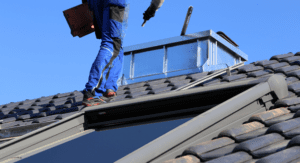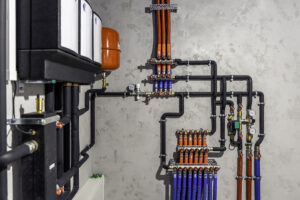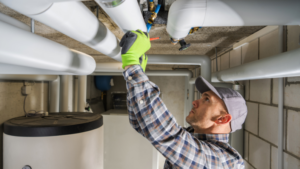A tiny drip under the sink or a damp patch on the ceiling might seem inconsequential. However, water leaks are one of the most common causes of hidden home damage, and they can remain undetected for months or even years. Over time, even minor leaks can create ideal conditions for mould growth, damage structural elements, and lead to extensive, costly repairs.
This blog explores the causes of leaks, the risks they pose, the ways they contribute to mould formation, and practical steps to identify and prevent them.
How Small Leaks Turn Into Major Problems
Even a small, slow leak can have significant consequences if left unaddressed:
- Structural Damage
Water that seeps into walls, ceilings, and floors can weaken timber, plaster, and other building materials. Over time, repeated exposure to moisture can cause wood to warp, rot, or lose load-bearing strength. Leaks from roofing, pipes, or plumbing fixtures often go unnoticed until visible damage occurs.
- Insulation Compromise
Moisture trapped in insulation reduces its thermal efficiency. This can result in higher energy bills, cold spots in rooms, and increased stress on heating and cooling systems.
- Mould Growth
Mould thrives in damp, poorly ventilated environments. Even small leaks behind walls or under floors provide the perfect conditions for mould spores to develop. Black mould (Stachybotrys chartarum), common in homes with persistent leaks, can lead to health issues such as respiratory irritation, allergies, or asthma exacerbation.
- Electrical Hazards
Leaks near electrical wiring or appliances can create fire or electrocution risks. Moisture increases the likelihood of short circuits and can damage electrical components over time.
Common Sources Of Hidden Water Leaks
Understanding where leaks originate is essential to preventing damage:
- Roof Leaks: Damaged tiles, deteriorated flashing, clogged gutters, or roof vent failures allow water to enter roof cavities, affecting ceilings, insulation, and timber framing.
- Pipe Leaks: Corrosion, high water pressure, loose joints, or aging pipes can cause hidden leaks behind walls or under floors.
- Fixture Leaks: Dripping taps, faulty toilet inlet valves, and leaking flexible hoses often indicate a larger underlying problem.
- Condensation: Poorly ventilated bathrooms, kitchens, or roof spaces can cause condensation that mimics leak damage.
Signs Of Hidden Leaks
Leaks can remain invisible for long periods, but there are subtle indicators:
- Musty Smells: Persistent damp odours are often the first clue of hidden moisture or mould.
- Discolouration: Dark stains or peeling paint on ceilings, walls, or skirting boards.
- Warping or Bubbling: Floors, walls, or ceilings may bulge or distort due to prolonged moisture exposure.
- Unexplained High Water Bills: Constant, unnoticed leaks can increase water usage over time.
- Recurring Plumbing Issues: Frequent tap repairs, running toilets, or dripping valves may indicate systemic problems.
The Role Of Roof Leaks In Hidden Water Damage
Roof leaks are particularly insidious. Water can enter through a single missing tile or cracked flashing, spreading across rafters, insulation, and ceilings before any signs appear indoors. Studies show that roof-related leaks contribute to more than 50% of mould-related home insurance claims in Australia.
Key risks associated with roof leaks:
- Rotting timber and structural weakening of ceilings and walls.
- Water damage to insulation and a reduction in thermal efficiency.
- Black mould growth is spreading throughout the roof cavities and walls.
- Increased energy consumption due to compromised insulation.
Even minor roof leaks can escalate during heavy rains or storm events, making early detection critical.
Health Impacts Of Mould From Leaks
Mould growth caused by leaks isn’t just unsightly; it can significantly affect health:
- Respiratory Issues: Prolonged exposure to mould spores can trigger coughing, wheezing, and asthma attacks.
- Allergic Reactions: Symptoms include itchy eyes, sneezing, skin irritation, and sinus congestion.
- Infections: Some types of mould can cause fungal infections in vulnerable individuals.
Children, the elderly, and immunocompromised individuals are particularly susceptible to health issues caused by indoor mould. Addressing leaks promptly can prevent these risks.
Detecting Hidden Leaks
Detecting leaks early requires careful observation and sometimes specialised equipment.
- Visual Inspection: Look for stains, peeling paint, warped surfaces, and dripping pipes.
- Moisture Meters: Measure moisture levels in walls, floors, and ceilings to identify hidden water.
- Thermal Imaging: Detect temperature differences that reveal wet spots behind walls or under flooring.
- CCTV & Pipe Locating: Useful for identifying leaks within buried or inaccessible pipework.
- Roof Inspection: Examine gutters, flashing, tiles, and roof vents for signs of water entry.
Preventing Leaks And Mould Growth
Homeowners can take proactive measures to minimise leak risks:
- Conduct routine inspections of roofing, gutters, and plumbing fixtures.
- Replace worn tap washers, toilet inlet valves, and flexible hoses promptly.
- Maintain clean and functional gutters to prevent overflow.
- Ensure proper ventilation in bathrooms, kitchens, and roof cavities to reduce condensation.
- Monitor indoor humidity; levels between 30–50% are ideal to prevent mould.
- Consider using leak detection devices for early alerts in critical areas.
Costs And Consequences
Ignoring leaks can result in:
- Extensive structural repairs (e.g., ceiling replacements, timber reinforcement).
- Mould remediation and potential health treatment costs.
- Increased energy bills due to compromised insulation.
- Long-term damage that reduces property value.
Conversely, early detection and preventive maintenance can save thousands in repair costs and protect the health of household occupants.
Protect Your Home from Water Leaks
Hidden water leaks are one of the most significant yet often overlooked threats to home integrity and health. Detecting leaks early, understanding the sources of water ingress, and maintaining proper ventilation and drainage are crucial steps for homeowners.
Even small leaks, if left unchecked, can lead to structural damage, mould growth, and health risks. Regular inspections and awareness of the signs of hidden leaks are key to keeping homes safe, dry, and healthy.
At Prorec Plumbing, we help Melbourne homes stay leak-free, mould-free, and ready for anything – no matter the season. If you’re concerned about potential leaks or have noticed any warning signs in your home, give us a call at 0421 411 146 or leave your details here so we can get in touch with you.




